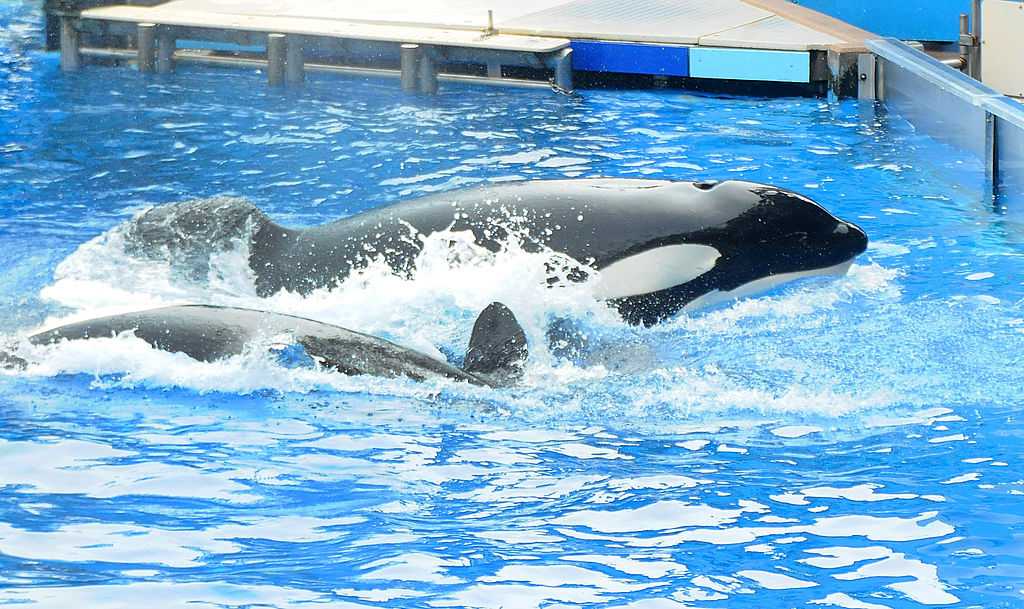'Blackfish' Orca Dies: How Tilikum Compares to Wild Cousins

Tilikum, a 36-year-old killer whale best known in recent years from the documentary "Blackfish," died today (Jan. 6), according to SeaWorld.
The male orca was involved in three human deaths during his approximately 34 years in captivity, including the 2010 killing of SeaWorld trainer Dawn Brancheau. The event was made famous by 2013's "Blackfish," which criticized SeaWorld for its handling of the incident.
"Blackfish" was also hugely influential in altering public perception of keeping orcas in captivity. In March 2016, after great public backlash, SeaWorld announced it was ending its orca breeding program, making the 22 individuals currently held in Orlando, San Antonio and San Diego the organization's last generation. [Orca Gallery: See Gorgeous Photos of Killer Whales]
But what of the whale Tilikum himself? Here's how he stacked up against his wild relatives:
Age: Approximately 36
Life span in the wild: According to the National Oceanic and Atmospheric Administration, male orcas typically live about 30 years in the wild, but can sometimes survive for up to 50 or 60 years. (Females live longer, with typical life spans of around 50 years and outliers who can live for up to a century.)
Length: 22.6 feet (6.9 meters)
Sign up for the Live Science daily newsletter now
Get the world’s most fascinating discoveries delivered straight to your inbox.
Maximum length in the wild: 32 feet (10 m) for males, 28 feet (8.5 m) for females. (According to SeaWorld, Tilikum was on the high side of average length for an Icelandic killer whale, which is the region where the orca was captured, in 1983. The average length for a wild Icelandic orca is between 19 and 22 feet, or 5.8 and 6.7 m.)
Weight: 12,500 lbs. (5,600 kilograms)
Maximum weight in the wild: 22,000 lbs. (10,000 kg) for males, 16,500 lbs. (7,500 kg) for females
Time with mother: Approximately two years. Tilikum was captured along with two other juvenile whales off the coast of Iceland in 1983 and transported to a marine zoo in Reykjavík, Iceland, before being bought by Sealand of the Pacific, a now-defunct marine park in Canada. He was involved in the death of a part-time trainer at that park in 1991, according to reporting by Outside magazine. After that, Tilikum was transferred to SeaWorld.
Time with mother in the wild: Decades, if not for life. Orca pods are matrilineal, which means that sons and daughters stay with their mothers for a lifetime. This is true of most resident killer whales, which are groups that stay in one region. Some killer whales are transient, however, and travel long distances in smaller groups, or even solo. Even transient males usually stay with their mothers, though, according to the conservation organization Wild Whales; when one male orca is solo, it usually means his mother has died. Male killer whales don't reach full sexual maturity until about age 25, according to the Center for Whale Research.
Diet: Between 1 percent and 3.5 percent of his body weight in herring, smelt and squid per day, according to SeaWorld. For a big whale like Tilikum, that translates to between 125 and 438 lbs. (57 and 199 kg) per day.
Diet in the wild: The diets of killer whales vary by region, according to NOAA. The animals may eat anything from seabirds to seals to fish to other whales.
Human deaths associated with Tilikum: Three. Tilikum was one of three orcas in a tank at Sealand of the Pacific in 1991 when a part-time trainer named Keltie Byrne fell into the enclosure. The three attacked and drowned her. In 1999, at SeaWorld Orlando, a man named Daniel Dukes entered Tilikum's tank after closing; it isn't known whether Tilikum killed Dukes, but the man was found drowned, mutilated and draped over the whale the next morning. Most notoriously, Tilikum dragged SeaWorld trainer Brancheau into the water after a show in February 2010, causing the woman's death by drowning and trauma.
Human deaths from killer whales in the wild: None
Original article on Live Science.

Stephanie Pappas is a contributing writer for Live Science, covering topics ranging from geoscience to archaeology to the human brain and behavior. She was previously a senior writer for Live Science but is now a freelancer based in Denver, Colorado, and regularly contributes to Scientific American and The Monitor, the monthly magazine of the American Psychological Association. Stephanie received a bachelor's degree in psychology from the University of South Carolina and a graduate certificate in science communication from the University of California, Santa Cruz.










